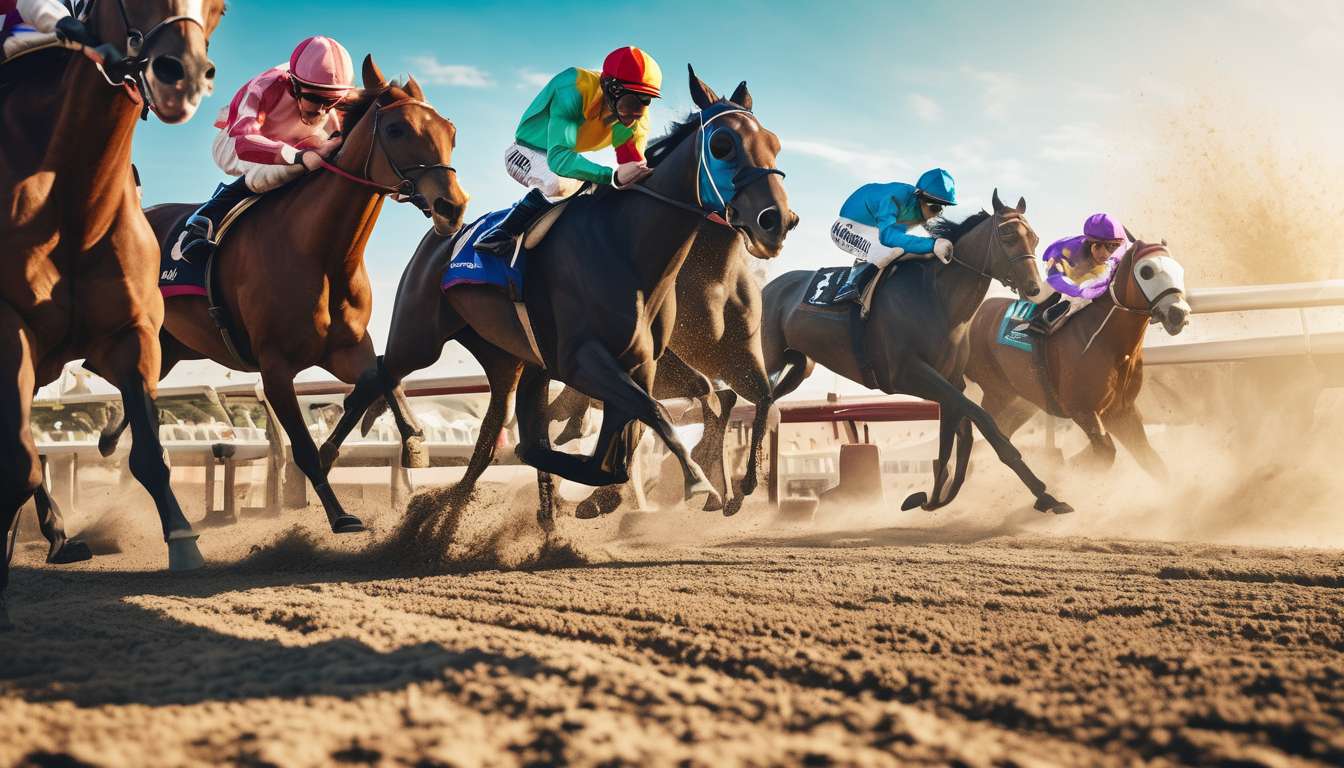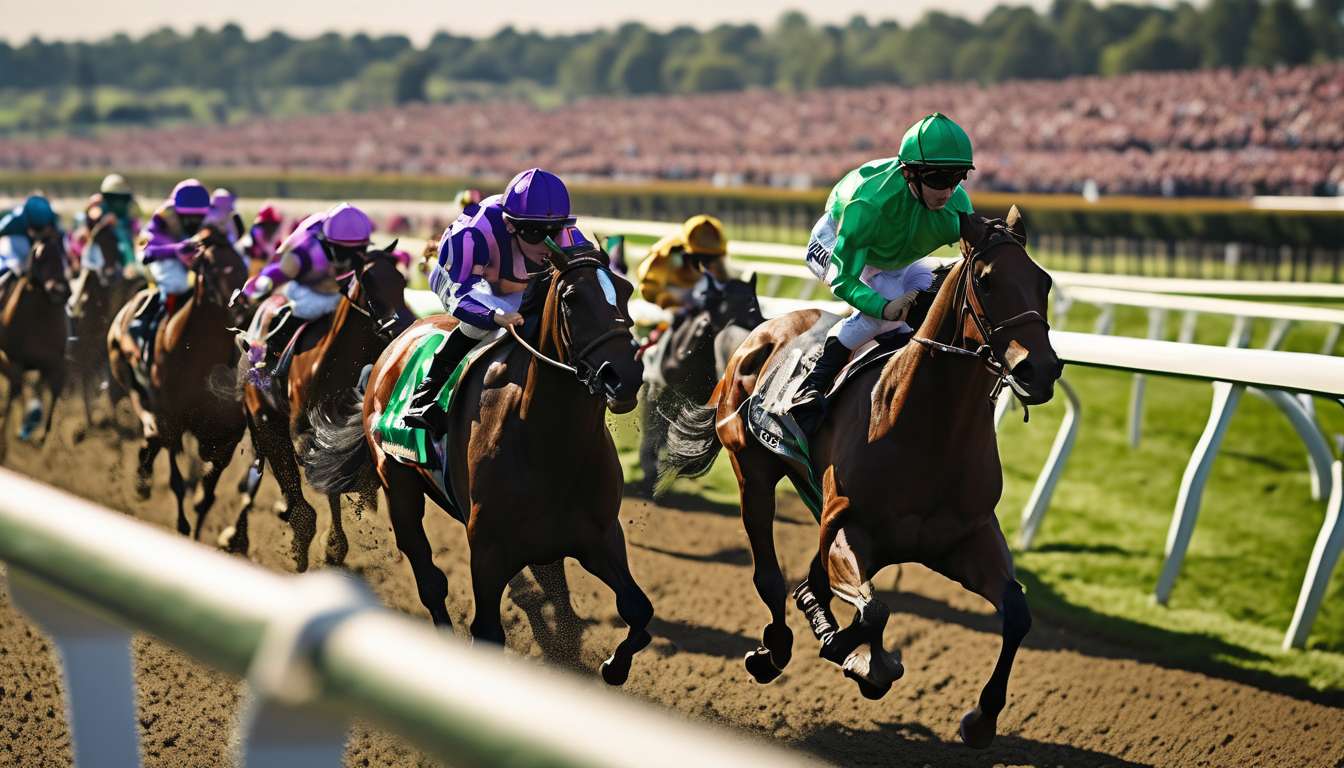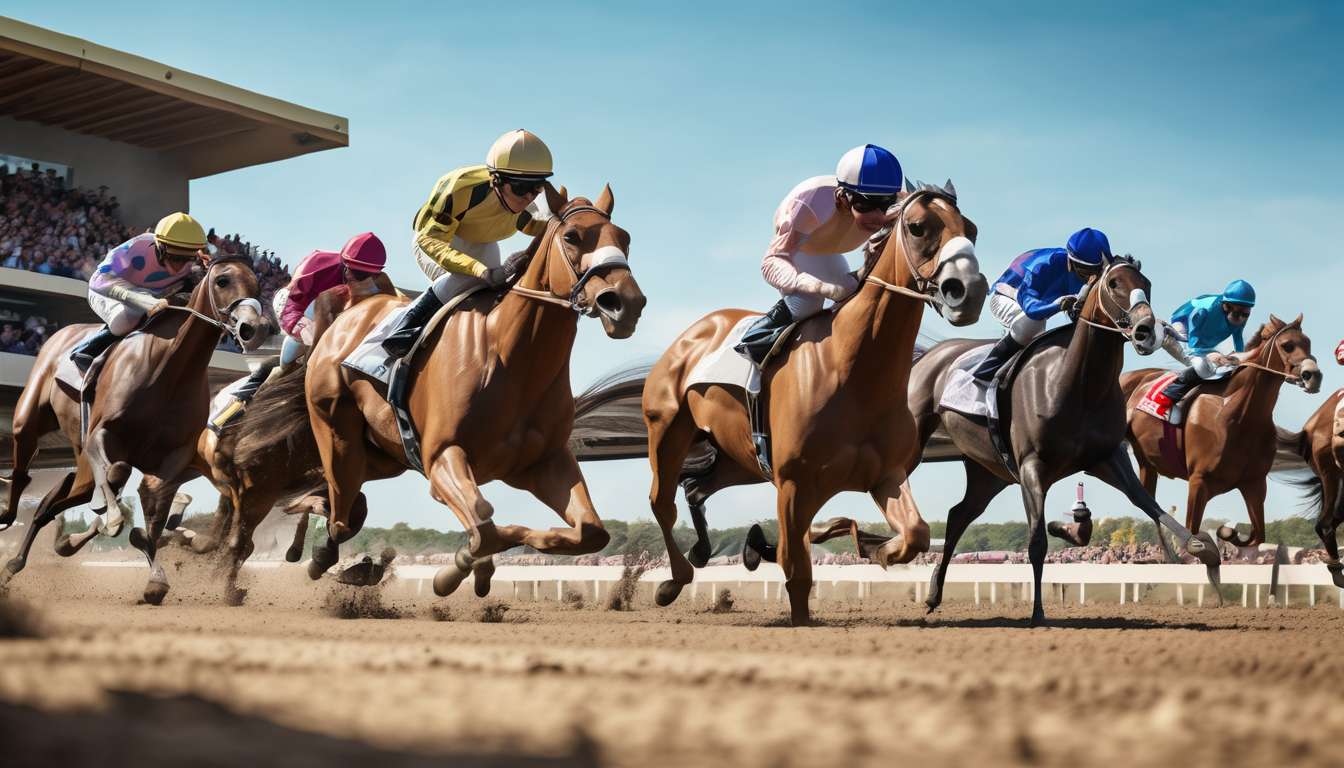As racing enthusiasts, we often find ourselves gathered around the track, eyes eagerly scanning the starting gates. The anticipation of the race is palpable, and we can’t help but wonder: does the position from which our favorite horses begin really make a difference?
This question has sparked many debates among us, with some swearing by the significance of a favorable post position, while others argue that a horse’s skill and strategy ultimately reign supreme.
In this article, we delve into the intricacies of starting gates, examining:
- Statistical data
- Expert opinions
- Historical race outcomes
Our goal is to uncover the truth. We will explore whether a horse’s starting position can truly influence the outcome of a race, or if it’s just a small piece of a much larger puzzle.
Join us as we navigate the fascinating world of racing dynamics, where every detail, no matter how seemingly minor, can tip the scales in unexpected ways.
Impact of Post Position
The Influence of Post Position in Horse Racing
The post position in a race can significantly influence a horse’s performance and overall outcome. Post position plays a crucial role in race dynamics, determining the path a horse must navigate and the challenges it may face.
- Some positions offer clear advantages.
- Others present obstacles that require skillful maneuvering.
Shared Excitement Among Fans
When we gather to watch a race, we all want to feel connected to the thrill of the event and the strategies unfolding before us. As fans, we often discuss how a horse’s starting gate impacts its chances, creating a shared understanding and excitement.
By considering the post position, we’re engaging with more than just the race itself; we’re diving into the intricate details that make each event unique.
Collective Experiences and Observations
Although statistical analysis provides insights, we also rely on our collective experiences and observations. This creates a bond through shared narratives.
Together, we appreciate the complexities and nuances of how post position shapes the thrilling spectacle of horse racing.
Statistical Analysis
We can dive into the numbers to uncover how different starting gates statistically influence race outcomes. By analyzing past races, we’ve found that post position plays a critical role in race dynamics. Some gates consistently yield more wins, while others often see horses struggle to catch up. Through statistical analysis, we’re able to identify patterns that suggest certain gates provide a strategic advantage.
Key Observations from Data Analysis:
- Inside post positions frequently allow horses to take the lead early.
- Outer gates may require a stronger start to overcome the initial distance.
Community Insights:
As a community passionate about racing, we share these insights to better understand how race dynamics are shaped before the starting gun even sounds.
Additional Factors:
Our analysis also highlights that while post position can significantly influence outcomes, the following factors can’t be overlooked:
- Horse skill
- Jockey experience
Conclusion:
Together, let’s continue to explore these statistics, deepening our collective knowledge and enhancing our shared passion for racing.
Expert Insights
We’ve gathered insights from seasoned racing experts to better understand how starting gate positions impact race strategies and outcomes. These experts emphasize that post position is more than just a number; it can significantly influence race dynamics.
Horses starting on the inside:
- Often face the challenge of crowding
- Have the advantage of a shorter path to the first turn
Horses starting on the outside:
- Might enjoy more space early on
- Need to cover extra ground
Our experts highlight the importance of tailoring strategies to the specific post position:
- Jockeys might push for an early lead if they start from an inside gate.
- Jockeys might maintain a steady pace from the outside to conserve energy.
They remind us that these choices are often informed by statistical analysis, which helps identify patterns and probabilities for success based on historical data.
In essence, understanding post position is crucial for anyone passionate about the race, whether on the track or cheering from the sidelines.
Historical Trends
Over the years, we’ve seen how starting gate positions have consistently influenced race outcomes across various events. Our collective fascination with racing draws us into the intricate world of post position and race dynamics. It’s in these details that we find camaraderie and shared excitement.
As part of this community, we’ve delved into historical data, revealing patterns that speak volumes about the significance of a horse’s starting spot. Through statistical analysis, we’ve discovered that certain positions often enjoy higher win rates, shaping our understanding of the sport.
For instance:
- Horses starting from the inside gates frequently secure early leads, leveraging advantageous angles.
- Meanwhile, those in outer positions might face challenges navigating turns, impacting their overall performance.
Our shared passion for racing unites us in exploring how these trends have persisted over decades. By examining the historical trends, we not only celebrate the sport’s rich heritage but also deepen our appreciation for the complexities of race dynamics.
Strategies for Success
To maximize our chances of success, we focus on developing strategies that leverage starting gate positions to gain a competitive edge. By analyzing post position data and its impact on race outcomes, we can tailor our approaches to enhance performance. We’re a community driven by the pursuit of excellence, and understanding the nuances of post position is a key part of our journey.
Our strategies begin with:
-
Thorough Statistical Analysis:
- We examine past races to identify patterns and trends.
- We evaluate how specific positions influence race dynamics.
-
Adaptive Tactics:
- If a particular post position consistently shows favorable results, we adjust training and race-day strategies to capitalize on that advantage.
Together, we share insights and experiences, fostering a sense of belonging within our team. This collective effort not only strengthens our strategies but also enhances our overall success.
By embracing these strategies, we position ourselves for greater achievements in future races.
Race Dynamics
Understanding the various elements at play during a race is crucial for us to anticipate and adapt to the ever-changing dynamics on the track. Each race tells a unique story, and statistical analysis provides the tools we need to decode it.
Post position isn’t just a number; it’s a factor that can significantly impact a horse’s race trajectory. Race dynamics shift constantly—jockey strategies, weather conditions, and even crowd energy contribute to the unfolding drama.
As a community, we rely on statistical analysis to make sense of these variables, drawing patterns and insights that guide our decisions. Together, we interpret data to understand how post position can affect a horse’s performance, influencing the entire race.
By embracing this knowledge, we become part of a collective effort to refine our approaches and enhance our shared racing experiences. Let’s continue exploring these dynamics together.
Surprising Revelations
We’ve uncovered some unexpected insights that challenge our assumptions about how starting gates influence race outcomes. Our statistical analysis reveals that post position isn’t always the deciding factor we thought it was. While traditionally, certain positions were believed to hold inherent advantages, the data shows that race dynamics play a more significant role than previously understood.
It’s fascinating to see that even within our close-knit community of enthusiasts, these revelations can spark lively discussions. We’re learning that factors like:
- Track conditions
- Weather
- The horse’s temperament
can overshadow the importance of starting gates. This understanding fosters a deeper sense of connection as we collectively revisit and refine our strategies based on this newfound knowledge.
As we continue to delve into this topic, we’re embracing the idea that racing is a complex interplay of multiple factors. Together, we can appreciate the nuances that make each race exciting and unpredictable, rather than relying solely on post position.
Key Takeaways
We’ve identified several crucial insights that reshape our understanding of how various factors influence race outcomes beyond just starting gates.
Key Factors Influencing Race Outcomes:
-
Post Position: While it undeniably plays a role, it is not the lone determinant.
-
Race Dynamics:
- Track conditions
- Competitor strategies
These factors significantly impact the final results.
As a community passionate about racing, we realize that a holistic view is essential. While post position provides a starting point, it’s the interplay of multiple elements that truly defines the race’s narrative.
Our findings suggest that understanding these dynamics allows us to engage more deeply and predict outcomes with greater accuracy.
Moreover, embracing this broader perspective fosters a sense of unity, as we collectively explore the complexities of racing. It’s not merely about the numbers; it’s about the shared excitement and anticipation that binds us.
Together, we can appreciate each race as a unique story, shaped by intricate factors beyond the starting gates.
How does the weather influence the significance of post position in races?
Weather’s Impact on Race Post Position
When considering how the weather impacts the importance of post position in races, it’s essential to recognize that certain conditions can greatly affect a horse’s performance.
Key Weather Conditions:
-
Rain:
- Wet tracks may favor inside positions. Horses on the inside may experience less mud being kicked up and can maintain a more consistent pace.
-
Wind:
- Strong headwinds could make outside positions more favorable. Horses on the outside might benefit from drafting behind others, conserving energy for later in the race.
Conclusion:
Ultimately, the weather can alter the dynamics of a race and potentially shift the significance of post position in determining the outcome. Understanding these variables can provide strategic insights for both trainers and bettors.
What are some psychological factors impacting a jockey’s performance based on post position?
When we consider the psychological factors impacting a jockey’s performance based on post position, it’s crucial to acknowledge the mental challenges they face.
Jockeys’ Mindset Influences:
-
Jockeys may experience increased pressure or confidence depending on their starting gate location.
-
Being closer to the rail could evoke feelings of being boxed in.
-
An outer position might instill a sense of strategic advantage.
These psychological nuances can greatly influence a jockey’s mindset and ultimately impact their performance on race day.
How do the post position preferences differ across various types of racing events?
Post Position Preferences in Racing Events
In different racing events, our post position preferences vary based on the track type and distance, aiming to maximize our chances of a successful race.
Shorter Tracks:
- We tend to favor inside posts.
- This positioning allows for:
- A quicker start
- Less distance to cover
Longer Tracks:
- We often prefer outside posts.
- Benefits include:
- Avoiding getting boxed in
- More room to maneuver
Strategy Adjustment:
- Tailoring our strategy to the track type and distance is crucial for optimizing race performance.
Conclusion
In conclusion, while post position may not guarantee victory, it undeniably influences race outcomes.
Through statistical analysis and expert insights, it is clear that strategic positioning can make a difference. Understanding historical trends and race dynamics is key to developing successful strategies.
Embracing the nuances of post position can lead to surprising revelations and ultimately improve performance on the track.
Key Takeaways:
- Strategic positioning is crucial.
- Historical trends provide valuable insights.
- Understanding race dynamics enhances strategy.
- Embracing post position nuances can lead to improved performance.
Keep these key takeaways in mind to enhance your approach to racing.



